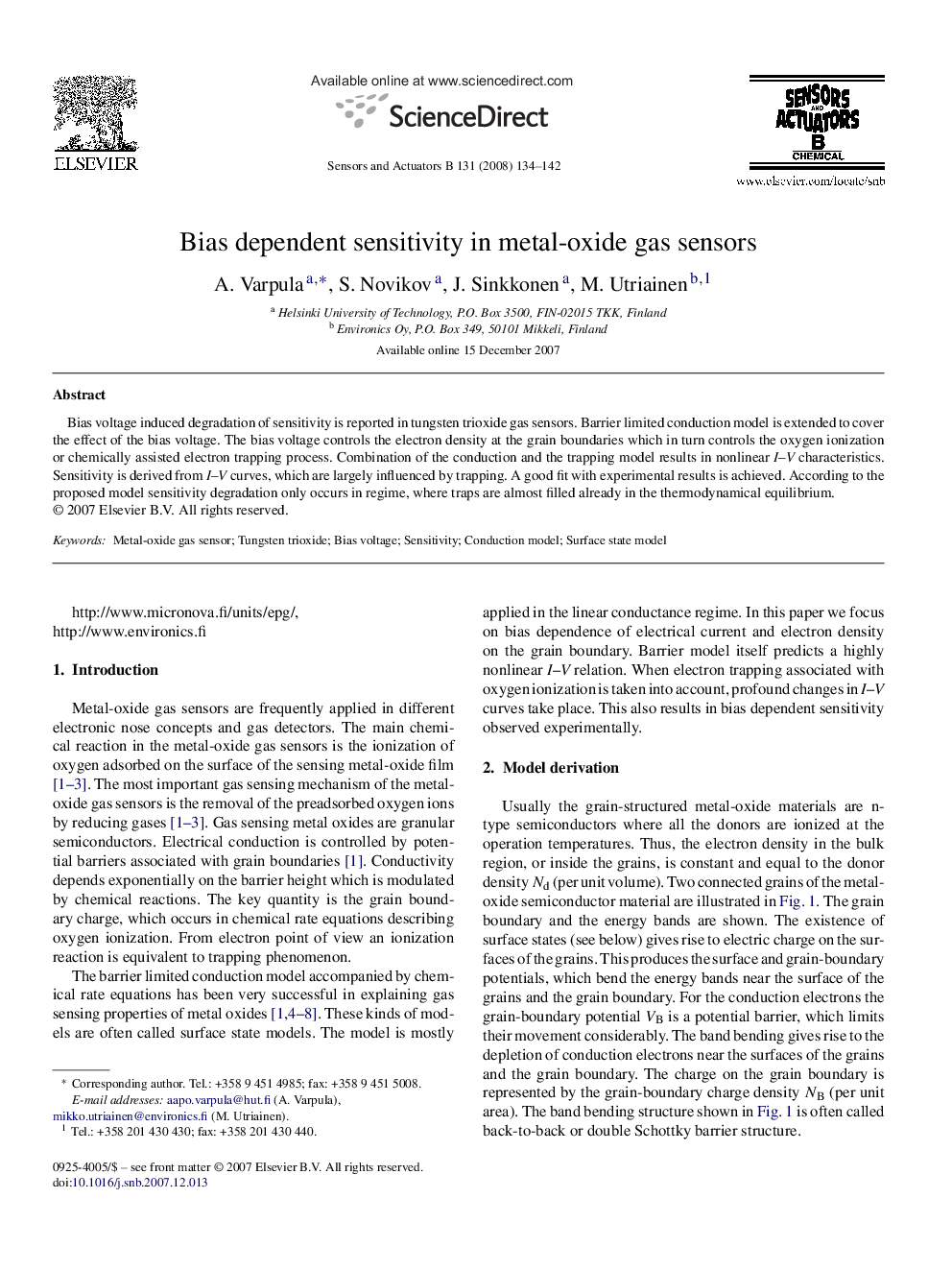| Article ID | Journal | Published Year | Pages | File Type |
|---|---|---|---|---|
| 741449 | Sensors and Actuators B: Chemical | 2008 | 9 Pages |
Abstract
Bias voltage induced degradation of sensitivity is reported in tungsten trioxide gas sensors. Barrier limited conduction model is extended to cover the effect of the bias voltage. The bias voltage controls the electron density at the grain boundaries which in turn controls the oxygen ionization or chemically assisted electron trapping process. Combination of the conduction and the trapping model results in nonlinear I–V characteristics. Sensitivity is derived from I–V curves, which are largely influenced by trapping. A good fit with experimental results is achieved. According to the proposed model sensitivity degradation only occurs in regime, where traps are almost filled already in the thermodynamical equilibrium.
Related Topics
Physical Sciences and Engineering
Chemistry
Analytical Chemistry
Authors
A. Varpula, S. Novikov, J. Sinkkonen, M. Utriainen,
